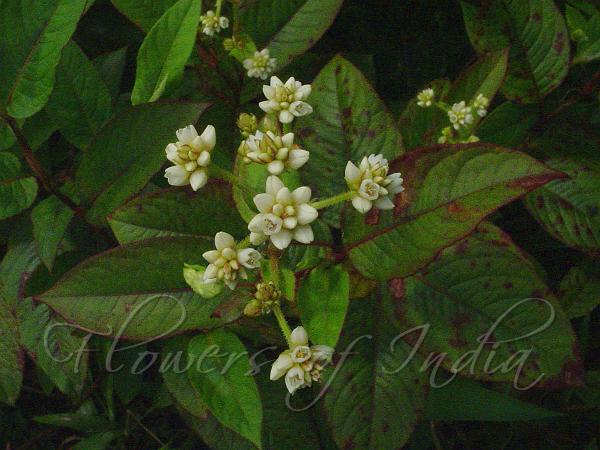|
| Chinese Knotweed |
|

|

| File size | 527321 |
| Original date | 9/24/06 9:37 AM |
| Resolution | 2048 x 1360 |
| Flash | Flash did not fire |
| Focal length | 6.3mm |
| Exposure time | 1/1000s |
| Aperture | 9.0 |
| Focus Distance | |
| Metering Mode | Spot |
| Camera make | SONY |
| Camera model | DSC-P52 |
| Sensor type |
|
|
|
| Photo: Prashant Awale |
Botanical name: Persicaria chinensis Family: Polygonaceae (Knotweed family)
Synonyms: Polygonum chinense, Polygonum auriculata
Synonyms: Polygonum chinense, Polygonum auriculata
Chinese Knotweed is a twining perennial herb, growing to 1 m tall. Nodes
prominent, stem reddish, glabrous, spineless. Alternately arranged
ovate-oblong leaves are 5-10 cm long, 3 cm wide, midrib violet-red colored,
upper surface of leaf with inverted "V" shaped spot. Flowers are small, white
or light reddish in color, arranged in heads (capitate); inflorescence
axillary. Calyx 5, enlarging when fruiting, transparent to white. Fruits are
berries, globose in shape. Enclosed in the enlarged and fleshy calyx at
maturity. Seeds small, black, fruits edible, sour tasting. Chinese Knotweed
is found in the Himalayas, from sea level to 3000 m. It is also found
in Western & Eastern Ghats. Flowering: September-December
| Identification credit: Prashant Awale | Photographed at Kas, Satara, Maharashtra. |
• Is this flower misidentified? If yes,